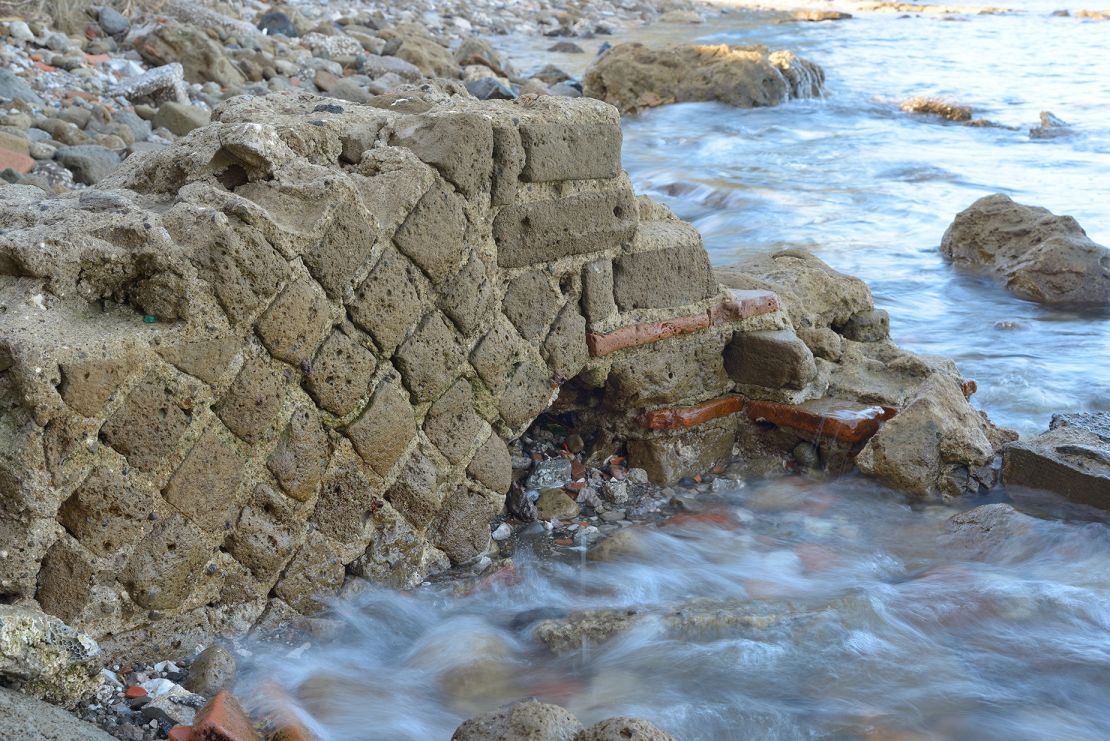A three-year project to build a children’s playground and recreation area south of the Italian city of Naples has unearthed the ruins of a 2,000-year-old clifftop beach house.
Built in the first century, the panoramic mansion — which overlooks the islands of Ischia and Procida — is now partly flooded by the sea. Experts believe it could have once been the opulent residence of Pliny the Elder, the legendary author, naturalist, and commander of the Roman navy fleet stationed there.
The discovery, made last week in the coastal town of Bacoli, unearthed the thick perimeter stone walls of 10 large rooms with floors, tiled walls and a maze of intact panoramic outdoor terraces.
Back in the first century, the mansion would have been located within the Roman port at Misenum, where for four centuries a fleet of 70 ships controlled the Tyrrhenian Sea, the security of which was key to holding the western flank of the Roman empire.

“It is likely that the majestic villa had a 360-degree view of the gulf of Naples for strategic military purposes,” Simona Formola, lead archaeologist at Naples’ art heritage, told CNN in an interview. “We think (the excavation of) deeper layers could reveal more rooms and even frescoes — potentially also precious findings.”
Authorities were surprised by the elaborate style of the walls, which were constructed with diamond-shaped tufa (limestone) blocks placed in a net-like ornamental pattern about 70 centimeters (27.5 inches) below ground.
The villa runs down to a little crumbling stone dock now located about four meters below sea level. That this — and other parts of the unearthed villa — are now underwater is due to the phenomenon of “negative bradyseism,” a term used to describe the gradual descent of the earth’s surface into the sea in areas exposed to frequent volcanic activity. (The area borders a moon-shaped “caldera” or extinct volcanic crater).
Digs will continue in coming months, with authorities hoping to shed further light on not only the form of the beach villa itself, but the broader life and structure of Misenum, one of the most important colonies in the Roman Empire.
“The discovery is even more exceptional given that we know very little (about) the port of Misenum,” said Formola.

As well as acting as a lookout point, Pliny’s beach villa would have also likely been used for leisure. The private dock was where he would greet high-ranking guests arriving by sea for lavish parties. Many Ancient Romans used to flock to Bacoli and the surrounding area, to enjoy their vacation homes and the region’s thermal baths and spa retreats.
Bacoli is located within the so-called “Phlegraean Fields” (or “Fire Plains”), which are dotted with natural geysers and tiny active craters where there are still frequent earthquakes. Due to its blazes and sulphureous vapors, the ancients believed it to be the entrance to the underworld and had dubbed it “the Mouth of Hell.” Indeed it’s possible that Pliny the Elder would have witnessed the eruption of Mount Vesuvius in AD 79 from the villa. It is known he died trying to rescue those fleeing the calamity.
While archaeologists were reportedly surprised by the finding, local lore had long speculated on the existence of an underground treasure in this location. On the beach neighboring the newly-discovered villa walls, a large brick ruin had been dubbed the “talking wall” by local residents as, in their view, it proved the one-time existence of a large residence.
The site will now become an open-air museum, set to open in the coming weeks. “The ruins of the Roman villa will be cleaned and cordoned-off with wooden fences,” said Bacoli’s mayor Josi Gerardo Della Ragione. “They will be the core of this beautiful space which… our citizens and visitors will get to admire.”




